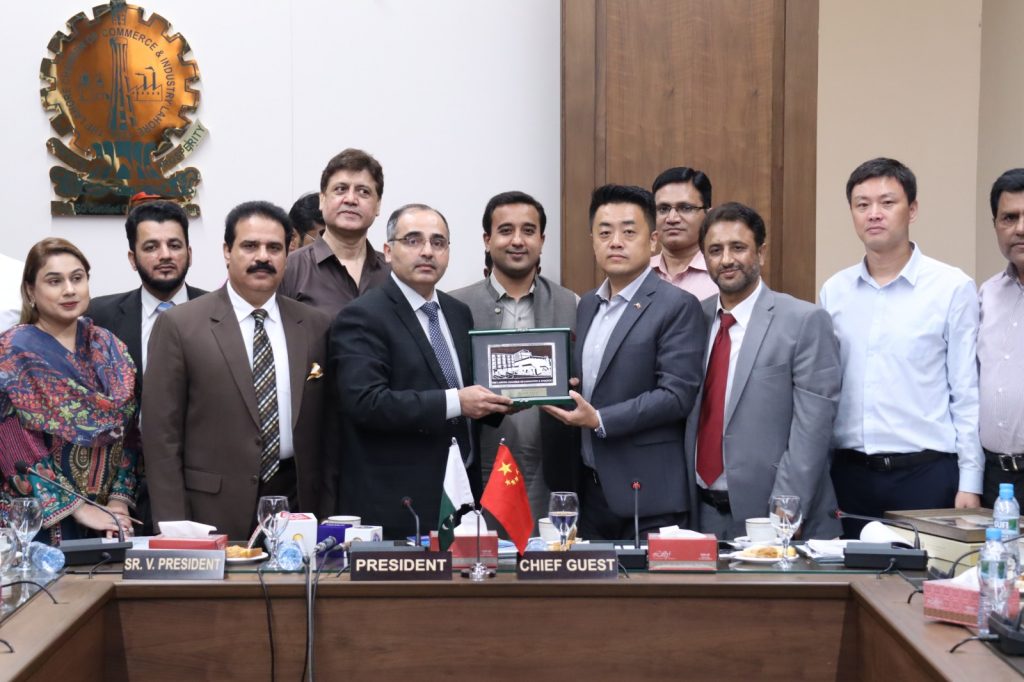The China Overseas Port Holding Company (COPHC) Chairman, Yu Bo, has termed Gwadar port as pivotal axis of CPEC.
He made these remarks during his median meeting held at the Lahore Chamber of Commerce and Industry (LCCI) while shedding light on the transformative progress of Gwadar under the China-Pakistan Economic Corridor (CPEC). He showcased avenues for Pakistani investors to engage formally with Chinese companies for joint ventures in Gwadar.
“The first stage of Gwadar’s port and city development, along with the Gwadar Free Zone, has been completed, marking a substantial achievement. We have been transforming Gwadar from a modest village into a thriving modern city, replete with cutting-edge technology,” he added.
Yu highlighted China’s substantial investments in Gwadar’s growth, spanning construction, airport infrastructure, and healthcare facilities. The Gwadar Free Zone, which came under the auspices of the Free Zone Company in 2018, he said, has already established a vibrant phase one, spanning 25 hectares adjacent to the port. Notably, this area has attracted six companies.
The North Free Zone, covering a sprawling 900 hectares, is positioned for industrial and warehousing purposes, and Yu emphasized its role in processing raw materials for subsequent export.
Yu revealed significance of Gwadar port’s operational status, its cargo handling capacity, and plans for the Gwadar International Airport’s full-scale operation. He emphasized the port’s role in facilitating barter trade with Iran, Afghanistan, and Russia, and highlighted Gwadar’s strategic advantages over Port Qasim.
The robust incentives extended to Chinese companies in the free zones, coupled with the prospect of win-win partnerships for Pakistani and Chinese businesses, was a recurring theme, he added.
Addressing Balochistan’s economic issue, Yu highlighted the region’s untapped potential, brimming with natural resources impaired by underdevelopment and negligible trade. The Gwadar port, however, is fully operational, equipped to manage both imports and exports, he asserted.
Talking about the major existing obstacles to economic development in Balochistan, Yu emphasized that the region has great undeveloped potential, and the natural resources here have not been fully and sustainably developed due to the previous economic underdevelopment. However, he asserted that the current operation of Gwadar Port has gradually entered the right track, and its import and export capabilities will gradually increase.
On the occasion, LCCI President Kashif Anwar and Senior Vice President Zafar Mahmood Ch, alongside Mr. Wang, Deputy Manager of COPHC, Atif Khan, Convener of the LCCI S/C on Gwadar Coastal Tourism and Executive Committee Members were present.
Yu’s visit wasn’t merely a formality; it was an invitation to the LCCI delegation to explore collaboration and investment opportunities in Gwadar. This gesture highlights China’s eagerness to foster joint ventures and establish industries, not just within Gwadar but also beyond its borders.
LCCI President Kashif Anwar reciprocated with enthusiasm, announcing a forthcoming business delegation to Gwadar. He hailed Gwadar’s paramount role within CPEC, accentuating its potential to catalyze regional connectivity, benefiting not only China and Pakistan but also adjacent nations such as Iran, Afghanistan, and Central Asian Republics. He viewed CPEC as a cornerstone for Pakistan’s industrial and economic revitalization.
Despite the strides taken since CPEC’s inception in 2015, Anwar acknowledged that much remained to be realized. The 10-year journey saw the rise of new infrastructure, from extensive road networks to power plants and free zones. While acknowledging these advancements, Anwar’s focus remained on fully unlocking CPEC’s economic potential, looking toward COPHC and Chinese investors for guidance.





